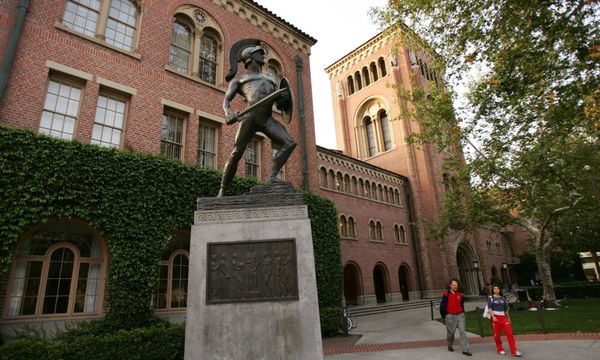
As Chicago officials scramble to shelter and find solutions for thousands of migrants who need housing and jobs, groups in St. Louis are looking to move some of those asylum-seekers there, modeling the program on similar efforts in recent years involving Afghan refugees.
The nonprofit International Institute of St. Louis is working with unions and philanthropic leaders to resettle possibly thousands of Latin American migrants in their city to bolster St. Louis’s workforce and stem its population decline.
“It could be the potential for a great relationship between both cities,” said Karlos Ramirez, vice president of Latino outreach for the International Institute. “If the [migrants] are going to be in a better place, St. Louis is going to be in a better place, and Chicago is going to be in a better place. I think everybody wins.”
Ramirez said the program would be funded primarily by private donors and would provide housing for as long as three months, cellphones, apprenticeship programs and job placement through unions and assistance from immigration lawyers.
He said St. Louis officials are “very much in line and on board with this initiative,” pointing to Mayor Tishaura Jones having recently created an Office of New Americans.

Ramirez drove to Chicago last weekend to assess the migrants’ needs. He said he met Monday with Beatriz Ponce De León, Mayor Brandon Johnson’s deputy mayor of immigrant, migrant and refugee rights.
Johnson’s office did not respond to a request for an interview with De León, who was leading a delegation visiting the Texas border.
Since August 2022, thousands of migrants have arrived in Chicago, most of them from Venezuela. The crush of new arrivals has seen many families living temporarily at police stations and O’Hare Airport. The city estimates that it could spend $343.7 million on migrants by the end of the year, even as buses bringing more migrants continue to arrive.
Ramirez said he’ll share information with partner organizations and create a one-page flyer to be circulated to migrants by Chicago agencies. He said his organization will seek documentation from asylum-seekers through the Biden parolee program, which last month sped up work visas for more than 500,000 migrants in the United States.
Ramirez said his group and Chicago officials are “being cautious and strategically intentional. I want to be careful not to all of a sudden get an onslaught of homeless [migrants] from Chicago and then create a homeless situation in St. Louis.”
The International Institute has beds and apartments ready for the first eight migrants to arrive immediately, Ramirez said. He said the plan initially was to resettle people from different U.S. cities but that he is leaning toward focusing on Chicago because of the large numbers of migrants in the city and because Chicago’s capacity to house them has been stretched thin.
The Latino Outreach Initiative is modeled after a similar program in recent years to bring Afghan refugees to St. Louis led by Jerry Schlichter, an attorney and civic leader there. Schlicther started that effort after seeing how the Bosnian resettlement to St. Louis in the 1990s bolstered the population and created a vibrant community. Two years ago, Schlichter started a program to bring Afghans to his city. Today, nearly 2,000 Afghan refugees have resettled in St. Louis, found jobs and started businesses and cultural organizations, he said.
Now, he hopes to do the same with Latin American immigrants. He would not specify how much he and others have donated to the program, only describing the amount as “substantial.”
Schlichter said that, as in many cities, St. Louis is experiencing a workforce shortage.
“There’s a tremendous need for employees,” he said, with construction companies, grocery chains, restaurants and manufacturing plants struggling to find workers as the region’s population remains stagnant.
“If you look around the country at cities that are growing, it’s primarily from immigrants and children of immigrants,” Schlichter said. “That’s what we’re trying to build here — to increase our population, make a more vibrant St. Louis and a more diverse St. Louis, which is a benefit for everyone.”







